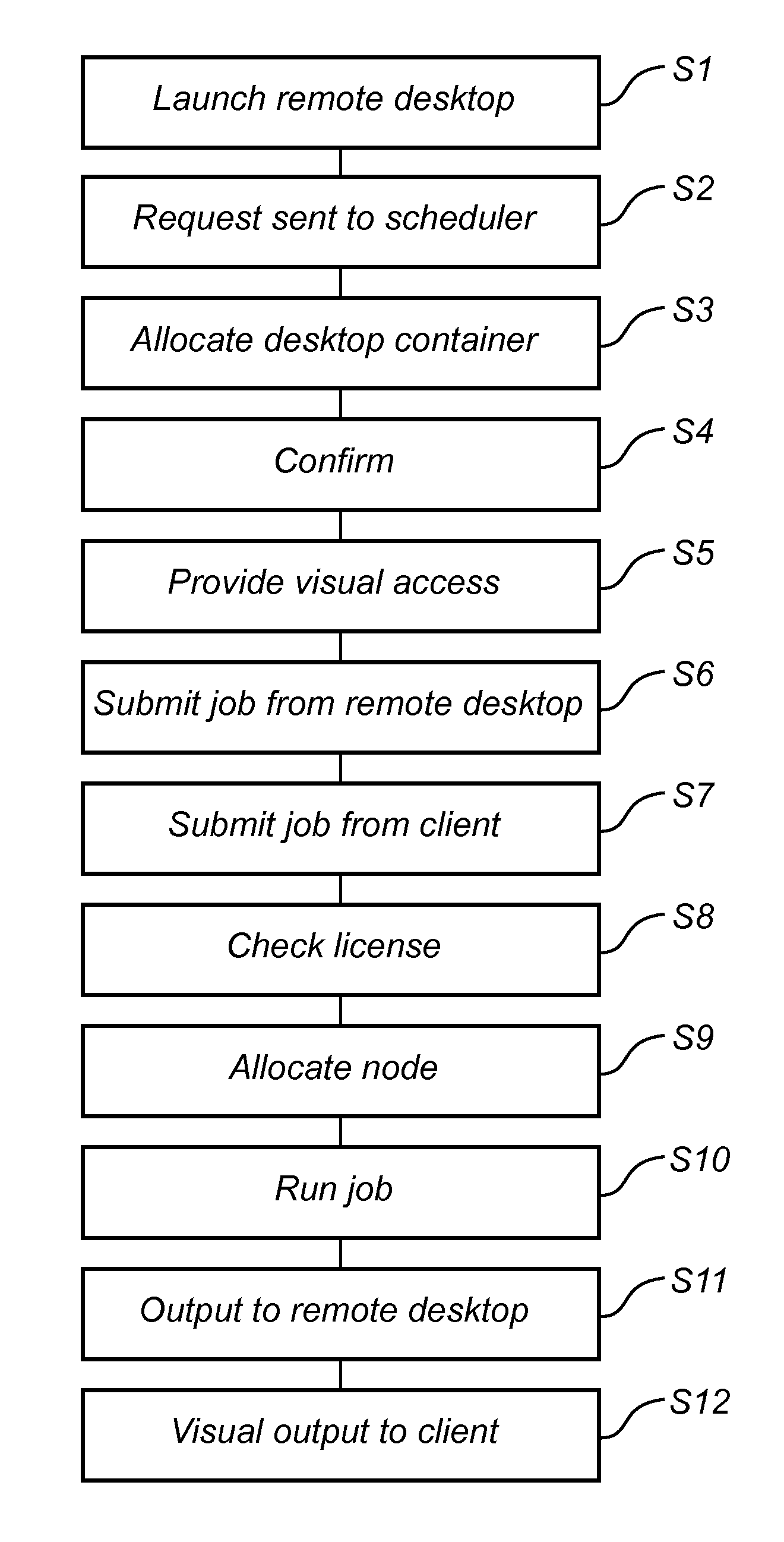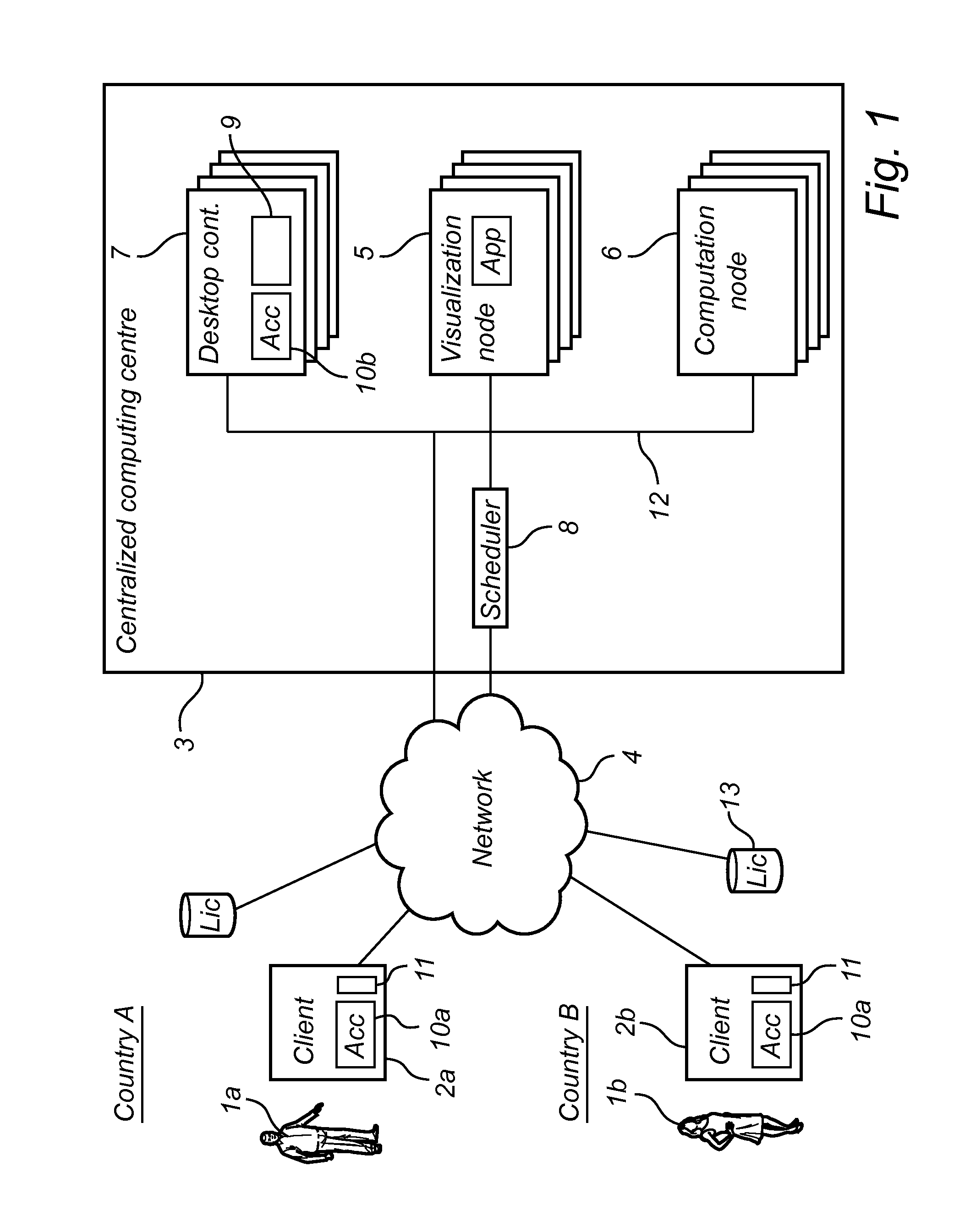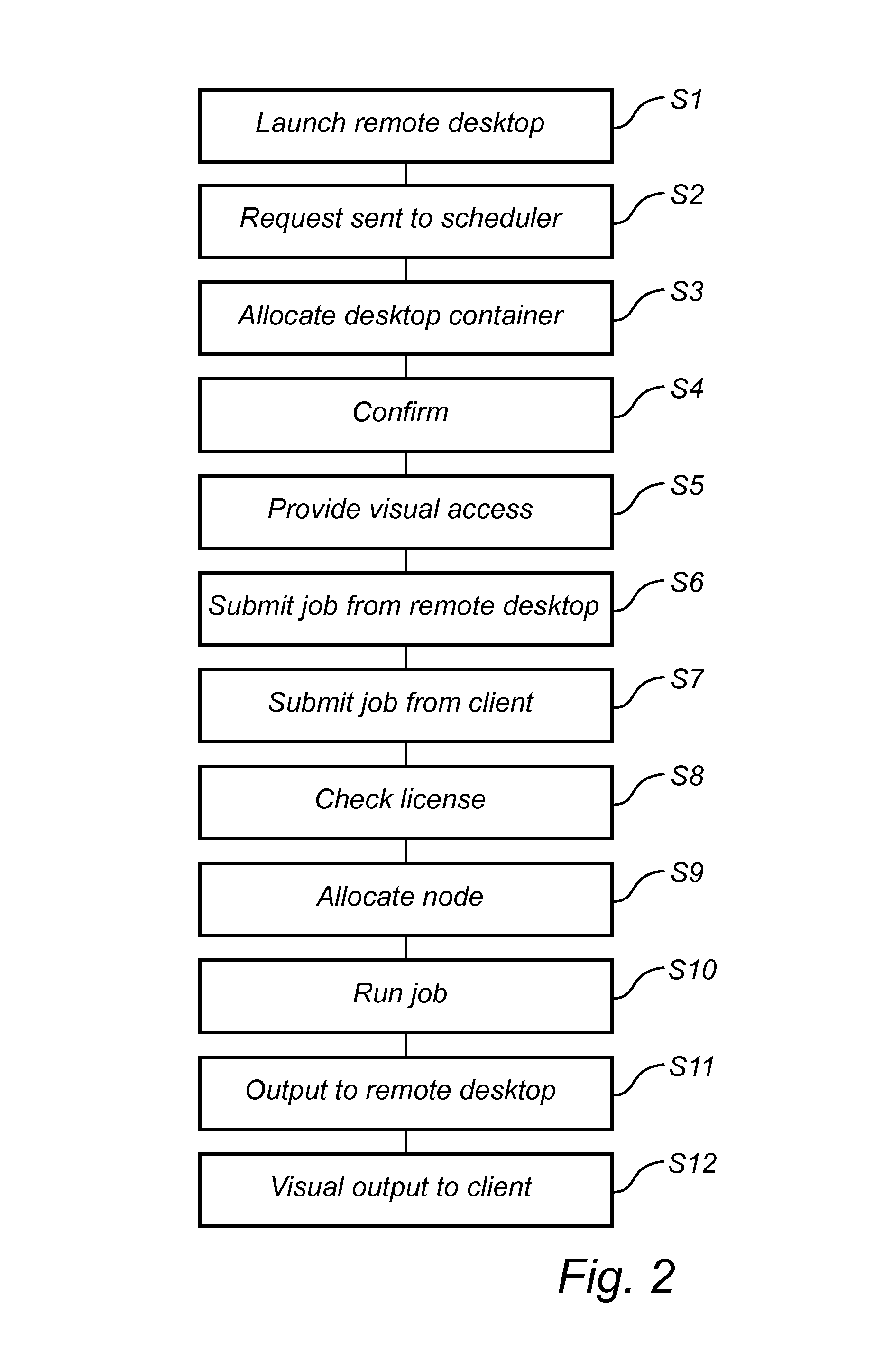Centralized computing
a centralized computing and data centre technology, applied in the field of centralized computing, can solve the problems of high latency over long distance connections, difficult to completely eliminate with current networking technology, and becoming increasingly difficult to sustain satisfactory performance of such centralized data and computing centres
- Summary
- Abstract
- Description
- Claims
- Application Information
AI Technical Summary
Benefits of technology
Problems solved by technology
Method used
Image
Examples
Embodiment Construction
[0026]The centralized computing system illustrated in FIG. 1 includes two users 1a, 1b, located in different geographic locations, here different countries A and B, and using clients 2a, 2b to access a centralized computing centre 3 (here referred to as a High Performance Computing (HPC) centre) over a network 4. Of course, the number of users is typically significantly greater than two, but is here limited for reasons of simplicity and clarity.
[0027]The clients 2a, 2b are typically so called “thin” client, indicating that they do not have any significant processing power, and they can thus be any standard computer such as a portable laptop or even tablet computer. However, the client may of course also be a more powerful computer. The clients are adapted to allow their users remote visual access to resources in the HPC centre by a remote desktop. Using the remote desktop, the user may submit to the HPC centre computing jobs requiring high performance computing resource...
PUM
 Login to View More
Login to View More Abstract
Description
Claims
Application Information
 Login to View More
Login to View More - R&D
- Intellectual Property
- Life Sciences
- Materials
- Tech Scout
- Unparalleled Data Quality
- Higher Quality Content
- 60% Fewer Hallucinations
Browse by: Latest US Patents, China's latest patents, Technical Efficacy Thesaurus, Application Domain, Technology Topic, Popular Technical Reports.
© 2025 PatSnap. All rights reserved.Legal|Privacy policy|Modern Slavery Act Transparency Statement|Sitemap|About US| Contact US: help@patsnap.com



